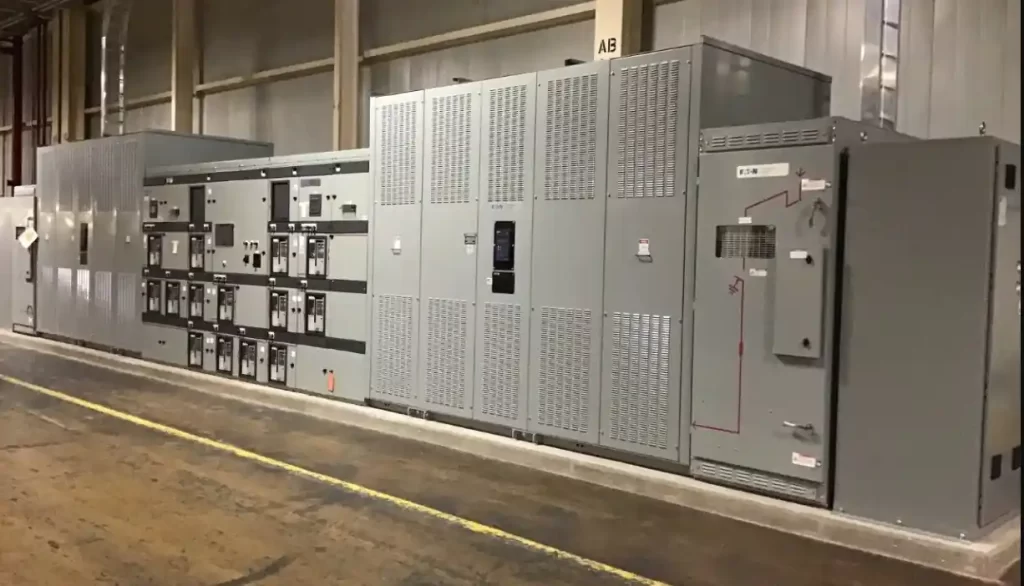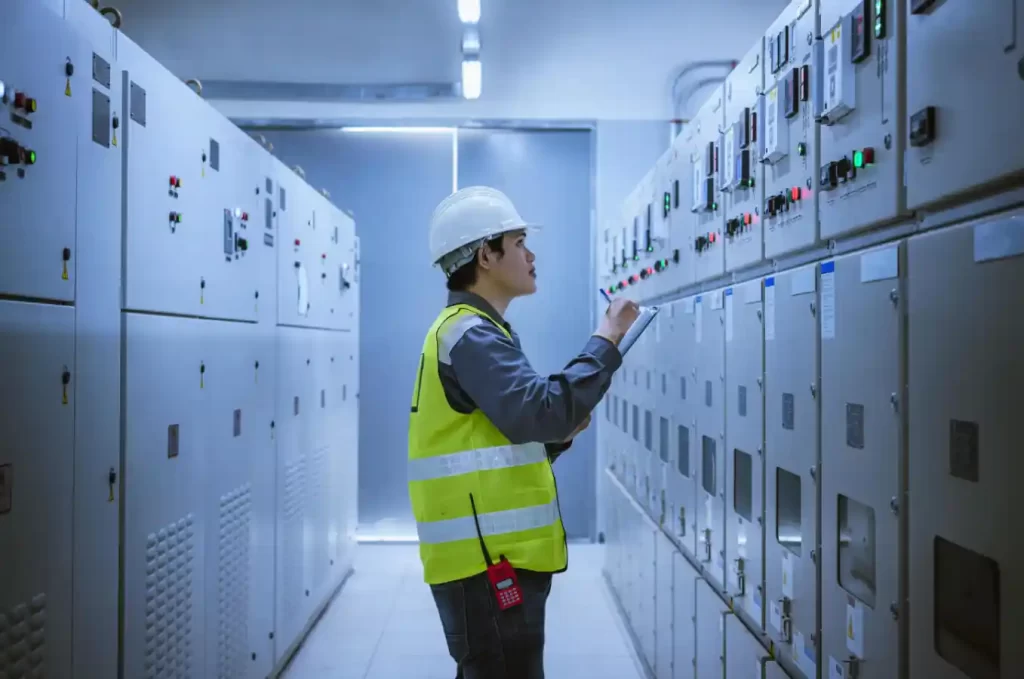Low voltage (LV) voltage switchgear plays a foundational role in modern electrical distribution systems, safeguarding both personnel and infrastructure in environments where electrical energy must be controlled, distributed, and protected. Understanding the voltage range of LV switchgear is crucial to selecting the right equipment for specific applications.

Core Concept: Voltage Definition in LV Switchgear
LV switchgear refers to electrical distribution and protection equipment that operates at voltages up to 1,000 volts AC (or 1,500 volts DC). This classification is defined by international standards including IEC 61439, IEC 60947, and IEEE Std 141. The voltage limit ensures that LV switchgear is suitable for applications involving lower power levels while still offering protection against overloads, short circuits, and electrical faults.
Common nominal voltage solutions levels include:
- 220V / 230V / 240V (single-phase systems)
- 400V / 415V / 480V (three-phase systems)
These values can vary based on regional electrical standards and utility grids.
Typical Applications of LV Switchgear
LV switchgear is used extensively in:
- Commercial buildings: Malls, hospitals, hotels, and office complexes
- Residential complexes: High-rise apartments, housing developments
- Industrial environments: Production plants, food processing units
- Renewable systems: PV inverter combiner boxes and battery energy storage systems (BESS)
- Institutional settings: Schools, universities, government facilities

Industry Trends and Market Outlook
According to a recent IEEMA market study and reports from MarketsandMarkets, the LV switchgear segment is experiencing significant growth due to:
- Urban infrastructure expansion
- Digitalization of electrical systems
- Rising adoption of smart building technology
- Grid decentralization and the growth of renewable energy integration
Leading manufacturers like ABB, Schneider Electric, and Siemens are innovating LV switchgear with features such as real-time monitoring, arc flash mitigation, and modular scalability to meet evolving safety and performance standards.
Technical Characteristics and Voltage Classes
| Parameter | Specification Range |
|---|---|
| Operating Voltage (AC) | Up to 1,000V |
| Operating Voltage (DC) | Up to 1,500V |
| Rated Current | Up to 6,300 A |
| Short-Circuit Capacity | Up to 100 kA |
| Typical Frequency | 50/60 Hz |
| Insulation Type | Air-insulated (most common) |
| Installation Type | Floor-mounted or wall-mounted |
| Standards Compliance | IEC 61439, IEC 60947, IEEE C37.20 |
How LV Differs from MV and HV Switchgear
Understanding where LV fits into the broader switchgear classification helps avoid confusion:
- Low Voltage (LV): Up to 1,000V (AC)
- Medium Voltage (MV): 1kV to 36kV
- High Voltage (HV): Above 36kV
Unlike MV and HV switchgear, LV units are:
- More compact and affordable
- Easier to install and maintain
- Typically used indoors
They are ideal for end-user power distribution rather than long-distance transmission.

Selecting the Right LV Switchgear by Voltage
When specifying LV switchgear, voltage isn’t the only parameter to consider—but it’s the starting point. Follow these guidelines:
- Match to supply voltage: Use 400V-rated switchgear for 400V 3-phase networks
- Ensure compatibility with equipment: Lighting, HVAC, motors, and pumps
- Consider expandability: Use modular panels for future circuit additions
- Evaluate fault current ratings: Based on transformer capacity and network impedance
- Verify certification: Choose products compliant with IEC/IEEE/ANSI standards
Consulting catalogs from manufacturers like Legrand, GE, and PINEELE can help determine the best configuration for your application.
Frequently Asked Questions (FAQ)
A1: No. LV switchgear is specifically designed for voltages ≤1,000V AC. For higher voltages, MV or HV gear is required.
A2: In many regions (e.g., Europe, Asia), 3-phase systems operate at 415V line-to-line. It balances efficient distribution with safe operation.
A3: LV panels are a form of LV switchgear—typically standardized enclosures housing breakers and protective devices for final distribution.
Understanding the voltage limitations and capabilities of LV switchgear is essential for safe and effective electrical system design. Operating up to 1,000V AC, LV switchgear bridges the gap between local energy delivery and broader grid infrastructure. As industries move toward smarter, more resilient systems, choosing the right voltage-rated switchgear ensures long-term safety, flexibility, and compliance.
For in-depth technical resources, refer to official publications by PINEELE, Wikipedia, ABB, or Schneider Electric.